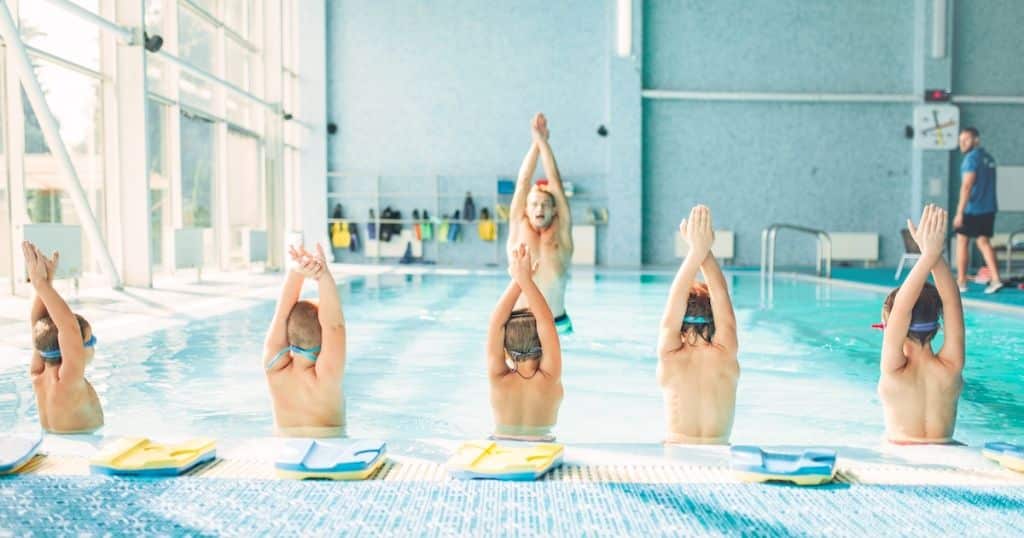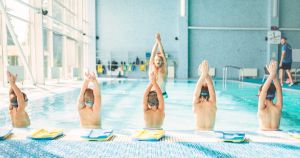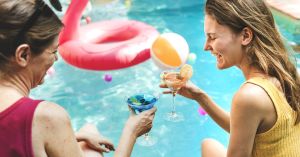As Aquatics Maintenance Coordinator for the City of Tempe, Arizona, Dan Pitt oversees every pool, splash pad and aquatic facility in the city. Maintaining water quality, managing limited staff and keeping costs in check is no small task – especially with aging UV pool systems that were becoming increasingly expensive and complex.
For years, Tempe relied on UV pool sanitizer systems as their secondary sanitation method. But as costs mounted, chlorine use increased and chloramine complaints persisted, Dan and his team started looking for a better solution.
What began as a small trial of Clear Comfort’s AOP pool system quickly proved itself. The result? A full citywide upgrade that saved $20,000 a year in maintenance, reduced chemical use and delivered clearer, more comfortable water.
Here’s what Tempe learned and what every aquatics professional should consider when comparing UV vs AOP pool systems.
The Problem: Hidden Costs of UV Pool Systems
At first glance, UV pool sanitizer systems appear to be a reliable choice for secondary disinfection. They can reduce chloramines, improve indoor air quality and provide an added layer of protection.
But as Pitt and the Tempe aquatics team experienced firsthand, the true costs of UV often go far beyond the initial price tag.
1. Ongoing Maintenance Expenses
Maintaining Tempe’s UV pool sanitizer systems came with a significant and recurring cost. These tasks couldn’t be handled by just anyone on staff – they needed trained professionals with special tools. On average, the City of Tempe spent $4,500 to $5,000 per UV pool system each year. Each unit required:
- UV lamp replacements
- Quartz sleeve cleaning
- System calibration by trained professionals
- Specialized tools not available to in-house staff
- Complex shutdown procedures before heating the pool
2. Installation Complexities
Installing UV pool systems brought significant expenses beyond the equipment itself. At the Kiwanis indoor wave pool, Tempe had to install a secondary, air-conditioned cabinet just for the UV unit itself. This alone made the UV pool installation three times more expensive than installing an AOP system, according to Pitt. This setup required more power, more space and more oversight.
3. Chlorine Consumption Spikes
A lesser-known drawback of UV is its impact on chemical use. UV-C pool systems break down free chlorine as part of their process, which led Tempe to use more significantly more chlorine to maintain proper levels. This not only drove up chemical costs, but also added to the handling and storage burden for staff.
After installing UV, Dan reported a noticeable spike in chlorine use:
- Chlorine consumption increased by 25% to 30% across facilities
- At Kiwanis, orders rose from 10 buckets to 15 buckets per delivery
4. Ongoing Water Quality and Chloramine Complaints
Despite using UV pool systems, Tempe’s aquatics team continued to face chloramine buildup – the main cause of that familiar “pool smell,” poor indoor air quality, skin irritation and red eyes. These issues were especially pronounced at indoor facilities, where both patrons and lifeguards reported frequent discomfort.
At the Kiwanis indoor wave pool, which sees 300 to 400 swimmers at a time, UV treatment alone wasn’t enough to maintain consistent water clarity or air quality during peak use.
The Result: Real Improvements Across Tempe’s Pools
Facing rising maintenance costs, strong pool odors and persistent chloramine issues, the City of Tempe needed a better solution. That’s when they partnered with Landmark Aquatic (formerly Commercial Pool Repair), who recommended switching from UV to a more effective alternative: the Clear Comfort AOP pool water treatment system. Tempe gained the same secondary and supplemental protection as UV, but with added oxidation power of Hydroxyl-Based AOP:
After switching from UV to Hydroxyl-Based AOP, the City of Tempe saw a noticeable transformation in both water quality and operational efficiency – especially at its busiest and most challenging aquatic facilities.
1. Clearer Water in High-Use Pools
The Clear Comfort AOP system delivered cleaner, clearer water and noticeably better indoor air quality – even during heavy use. Staff and patrons stopped reporting common issues with UV like chloramine odor, eye irritation and poor air clarity.
“We have an indoor wave pool, and our chloramines used to be pretty excessive to the point where waves would come out, the lifeguards’ eyes would start to burn after a while,” said Megan, Assistant Aquatics Coordinator for the City of Tempe. “So we don’t have that anymore. Our pool doesn’t smell like feet, and it’s just a really great product.”
Tempe’s aquatics team began receiving compliments from swimmers on water quality – a rare shift from the previous UV-driven complaints.
2. Lower Chlorine Use and Chemical Costs
One of the most noticeable cost differences between UV pool systems and AOP pool systems is chlorine consumption. UV systems caused Tempe to use significantly more chlorine due to free chlorine burn-off.
At the Kiwanis indoor wave pool, chlorine orders rose from 10 buckets to 15 buckets per order with UV – but returned to 10 buckets per order after switching to Clear Comfort AOP. Less chlorine means fewer chemical deliveries, lower storage requirements and reduced handling risks for staff.
3. Staff Time and Operational Simplicity
For Tempe’s short-staffed aquatics team, switching to Clear Comfort AOP meant a major reduction in maintenance time, complexity and costs.
With UV systems, staff had to manage:
- Complex shutdown procedures before heating the pool
- Specialized annual service requiring trained technicians, including bulb and quartz sleeve replacements
- Frequent maintenance tasks for chlorine handing
- Costly infrastructure, like air-conditioned cabinets for the UV system
In contrast, Clear Comfort AOP simplified everything:
- No shutdowns required when heating pools
- The only system maintenance required are 15-minute cartridge exchanges – no special tools and no downtime needed
- Fewer service calls and minimal troubleshooting
- Lower maintenance costs and less time spent on routine chlorine upkeep
“The installation is so much easier on Clear Comfort AOP versus any UV system,” said Dan. “UV is much more complicated, you need more power, secondary cabinets and a lot more maintenance.”
4. Cost Savings of $20K+ Annually
By eliminating annual UV maintenance and reducing chlorine usage, Tempe saved over $20,000 per year in direct costs alone. The total financial benefit was even greater when factoring in staff time and operational efficiency. Total savings factored in:
- Sustainably less energy use from removing UV power loads and air-conditioned cabinets
- Reduced chlorine orders after eliminating UV-related burn-off
- Less staff and service time spent on maintenance and troubleshooting
- Fewer service trips and less downtime, resulting in more pool uptime for guests
What Other Aquatic Facilities Can Take Away
If you manage a commercial pool or splash pad using UV sanitation, you’ve probably faced some of the same costly and frustrating challenges Tempe did:
- Rising chlorine and chemical costs
- Complex, expensive UV pool system maintenance
- Frequent air quality or chloramine complaints
- Staff stretched too thin for high-maintenance systems
- Equipment downtime and repairs cutting into guest satisfaction
Tempe’s experience shows that you don’t have to settle for the status quo – or be stuck with a UV pool system that costs more than it delivers. There’s a better way that real aquatic operators recommend.
By switching to Clear Comfort AOP, Tempe was able to:
- Save $20K+ annually in direct and indirect costs
- Reduce chlorine use by 25% to 30%
- Improve air and water quality, even in high-use indoor pools
- Simplify operations for their short-staffed team
- Maximize uptime and overall guest experience
If your aquatics facility is looking to cut costs, reduce hassle and deliver a better guest experience, it might be time to explore a Hydroxyl-Based AOP pool system.
Ready to Simplify and Save?
Tempe’s aquatics team proved there’s a smarter way to manage water quality. By switching from UV to Clear Comfort AOP, they lowered costs, improved guest experience and made life easier for their staff — all without sacrificing protection.
If you’re facing rising chemical costs, complex UV upkeep or air quality complaints, now’s the time to explore a better solution.
Want to see how Clear Comfort AOP works, and whether it’s the right fit for your aquatic facility?
Download the Product Sheet »
Gabrielle Palumbo
Marketing Director


